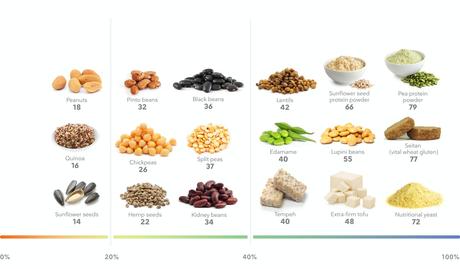
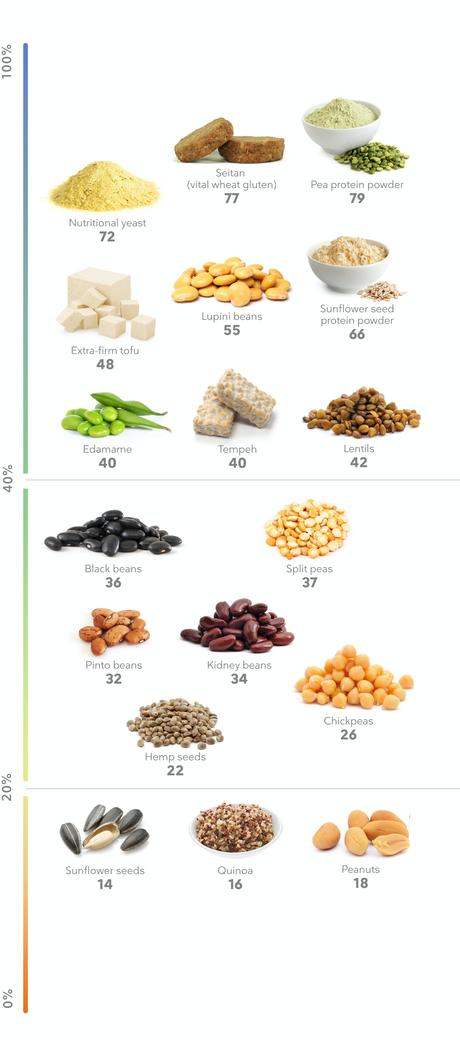
More high-protein guides
More high-protein guides
How to meet protein targets with plant-based foods
Protein is a nutrient your body needs to stay strong and healthy. On a vegan or plant-based diet, getting enough protein may take a bit more strategy - but we'll show you how to do it.
Essential amino acid needs
Twenty amino acids make up the "building blocks" of protein that your body uses to create muscle, skin, and hormones, among other functions.
Nine of these amino acids are essential, meaning your body cannot make them on its own. Instead, you need to get them from your food on a daily basis.
Animal foods provide all of the essential amino acids in the amounts your body needs to survive and thrive. For this reason, they are often referred to as complete protein sources.
Although many plants contain all nine essential amino acids, in most cases, one or more of these amino acids are only present in small amounts. Additionally, the protein in most plants isn't digested and absorbed as easily as the protein in animal foods. For this reason, most plants are referred to as incomplete proteins.
Certain plants - such as hemp seed, quinoa, and nutritional yeast - have been described by some as complete proteins. However, each of these plants is slightly low in one or more of the essential amino acids.It's more accurate to say that these foods provide "nearly complete" protein.
By contrast, soy is considered a complete protein because it provides all nine essential amino acids in amounts comparable to the milk proteins casein and whey. Your body also digests and absorbs soy protein efficiently.
Fortunately, meeting essential amino acid needs on a vegan diet is easy if you eat a wide range of different foods.
Here is a list of different types of plant foods that combine to make complete protein:Do you have to make a conscious effort to combine different plant proteins at each meal? No. Eating enough protein from a variety of plants every day ensures that you meet your amino acid needs.
Aim for a high protein percentage
Results from high-quality clinical trials show that getting plenty of protein can help you lose weight and prevent muscle loss.Vegan and vegetarian diets can also be beneficial for weight loss.
For healthy weight loss on a plant-based diet, choose foods that have a high protein percentage. This percentage tells you how much of a food's calories, excluding fiber, come from protein.
Try to choose plant foods with protein percentages of 35% or more most of the time. We'll tell you what those are in the list below. These foods are your best plant-based protein options.
Even if you don't want to lose weight, it's important to eat plant foods with high protein percentages to prevent muscle loss. Add calories by eating foods higher in fat and carbs after you've covered your protein needs.
How much protein do you need?
Because most plant proteins are less easily digested and absorbed by your body than animal proteins, prioritizing protein intake is key when eating a plant-based or vegan diet.
How much do you need? Aim to eat at least 100 grams of protein per day if you're a woman and 140 grams if you're a man of average height and build. Eat more if you're a man taller than 6 feet (183 cm) or a woman taller than 5 feet 6 inches (168 cm) or if you're very physically active. Eat less if you're shorter or have a petite frame.
This guide provides both the protein percentages and grams per serving for plant foods. Note that these are based on average values. Protein percentages and gram amounts can vary depending on food processing, preparation, and other factors. Protein amounts of prepared foods can also vary from brand to brand.
Eating low carb as a vegan
Although it's important to get enough protein, there are other things to keep in mind when eating a low-carb vegan diet. Learn more in our guide, How to eat low carb as a vegan.
The best plant-based high-protein foods
Eat a variety of these high-protein vegan foods as part of your daily diet. Remember, the goal is to prioritize those with a protein percentage of 35% or higher.
Beans and lentils
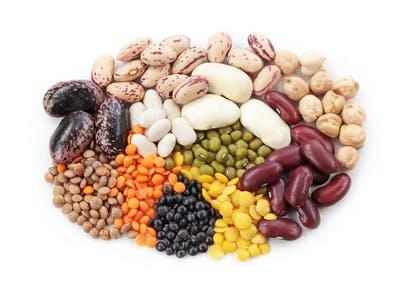
These legumes have a lot going for them. For starters, they're a great source of potassium, magnesium, folate, and fiber.
Beans and lentils are filling because they're high in both protein and fiber. Some studies suggest that including them in your diet may help you lose weight.
Although all types of beans can help meet your protein needs, some have higher protein percentages than others. So take note of their protein profiles - as well as the carb amounts if you eat a low-carb diet.
Below are the protein percentages and grams of protein, fiber, and net carbs per 1 cup (170 to 190 grams) of cooked beans and lentils.
- Lupini (lupin) beans:
Protein percentage:55%
26 grams of protein, 5 grams of fiber, and 11 grams of net carbs per serving
Tips for serving beans and legumes:
Peas
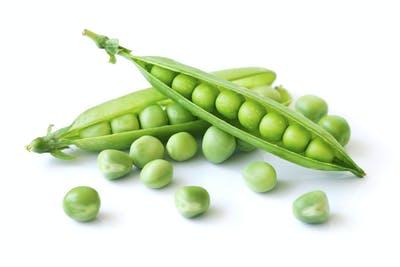
Peas are also a vegan protein that can help you feel full and satisfied.
Peas have lower protein percentages and provide less protein per serving than most beans. Additionally, they're high in net carbs. Feel free to include them in your plant-based lifestyle, but keep portions small if you follow a keto or very low-carb diet.
Below are the protein percentages and grams of protein, fiber, and net carbs per 1 cup (160 to 190 grams) of cooked beans and lentils.
Tips for serving peas:
Seeds
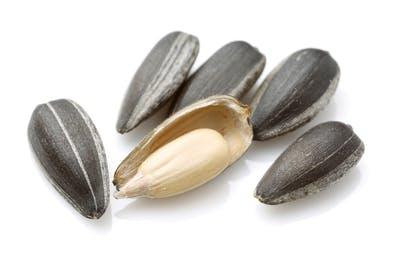
While most seeds are high in fat and low in carbs, wild rice, quinoa, and buckwheat are low in fat and high in carbs. However, all seeds have low protein percentages and don't provide a lot of protein per serving.
The good news is, seeds can still contribute to your daily protein needs. Just make sure to also eat plenty of high-protein vegan foods from the other categories in this guide.
Below are the protein percentages and grams of protein, fiber, and net carbs per serving of seeds. (Serving sizes vary; see specific foods.)
Tips for serving seeds:
Nutritional yeast
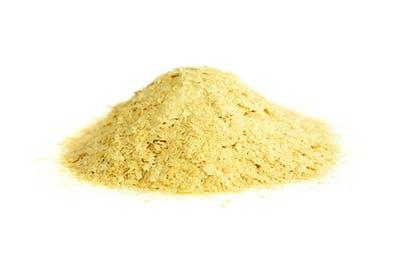
Nutritional yeast comes from Saccharomyces cerevisiae, the same yeast species used to make beer and bread. However, unlike live yeast that causes bread to rise, nutritional yeast is treated with heat, which kills the yeast cells. Next, it is dried into a powder or flakes and packaged for sale.
Besides being an excellent vegan protein option, nutritional yeast contains several B vitamins like riboflavin, niacin, and vitamin B6. Some types are fortified with vitamin B12.
Below are the protein percentage and grams of protein, fiber, and net carbs per ounce (30 grams) of nutritional yeast flakes, approximately one-quarter cup:
Nutritional yeast flakes:
Protein percentage: 72%
16 grams of protein, 6 grams of fiber, and 4 grams of net carbs per serving
Purchase nutritional yeast flakes or powder in the spice section of your health food store or online. How does it taste? People often describe the flavor as nutty or earthy. And for many, it may be an acquired taste.
Tips for eating nutritional yeast:
Soy
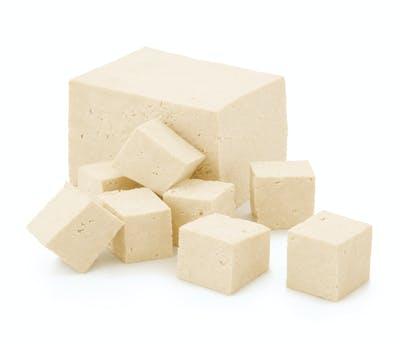
In the past, soy received its share of controversy based on very weak animal and test-tube research that suggested it could potentially increase the risk of cancer and other health problems. However, most of the high-quality human research on soy shows that it is safe and may reduce - rather than increase - disease risk in some cases.
For vegetarians and vegans in particular, the benefits of consuming soy appear to greatly outweigh the risks.
Soy can be valuable for plant-based low-carb eaters because, unlike other legumes, it is both high in protein and low in net carbs. We recommend choosing tofu, edamame, soybeans, tempeh, and nattō rather than soy protein powders and other highly processed products.
Below are the protein percentages and grams of protein, fiber, and net carbs per serving of soy (serving sizes vary; see specific foods).
Tips for serving soy:
Seitan (vital wheat gluten)
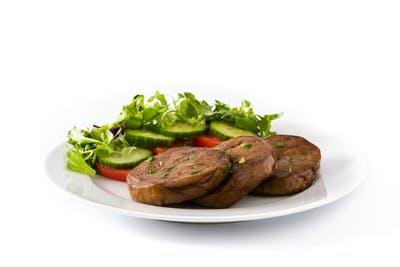
Gluten is the main protein found in wheat and other grains like barley and rye. However, unlike most grain products, seitan is very low in carbs. It's also a good source of minerals like iron and selenium.
Seitan is made by mixing water with wheat flour to form a dough, which is kneaded and rinsed repeatedly to remove the starch. After several rinsings, only gluten strands remain. This final product is seitan, a concentrated protein source that's typically seasoned with soy sauce before cooking.
If you have celiac disease or are sensitive to gluten, seitan isn't for you. But if you tolerate gluten, consider giving seitan a try.
Below are the protein percentages and grams of protein, fiber, and net carbs per 3.5 ounces (100 grams) of seitan, approximately one-third cup:
Seitan:
Protein percentage: 76%
22 grams of protein, 1 gram of fiber, and 4 grams of net carbs per serving
Tips for serving seitan:
Plant-based protein powders
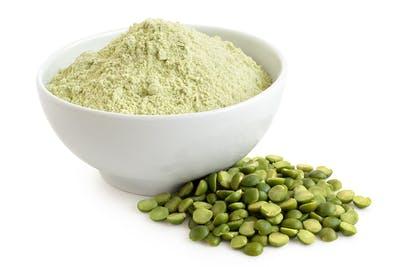
Plant-based protein powders are a convenient way to get a hefty protein dose without a lot of carbs. Why? Because they often have exceptionally high protein percentages.
If you decide to supplement with protein powders, choose types without added sugar. Look for unflavored powders that contain only the plant protein (for example, pea protein). Or select brands flavored with any of the sugar-free sweeteners we recommend.
Below are the protein percentages and grams of protein, fiber, and net carbs per ounce (30 grams) of protein powder. Note: These are average values. When choosing a protein powder, be sure to read nutrition labels since protein and carb content can vary among brands, resulting in higher or lower protein percentages.
Nuts
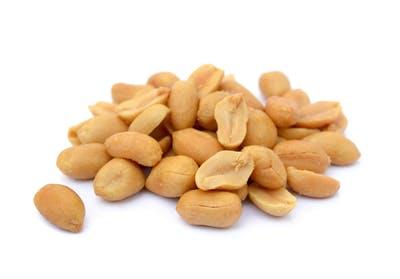
On the other hand, nuts have a lot of non-protein calories - and their delicious taste often makes them tempting to overeat. One handful can lead to another, then another, and so on.
Although nuts provide some protein, their protein percentages are low due to their high fat content. So they're not one of the best plant-based protein sources. Portion out a small amount (one-quarter cup or less) to top a salad or eat as a snack.
Peanuts, technically a legume, have the highest protein percentage of all nuts at 18%. Which nut has the lowest protein percentage? Macadamia nuts. Although they're prized for their very low carb count, macadamias have a protein percentage of only 4%.
To read more about our the best high-protein nuts, check out this guide.
Vegetables
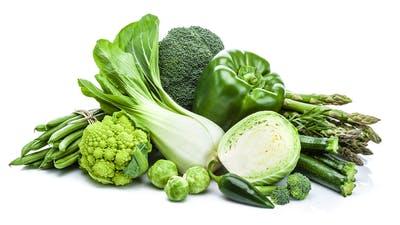
Compared to other foods on this list, vegetables don't provide a lot of protein. However, many vegetables have high protein percentages because they're so low in fat and net carbs.
Vegetables contain some of the essential amino acids that are limited in other plant foods. So, including them at every meal can improve the overall protein quality of your diet.
Vegetable protein percentages span a large range, with spinach topping the list at 57%. Yellow bell peppers rank last among non-starchy vegetables at 15% protein. And parsnips are at the bottom of the protein percentage scale for starchy vegetables at 8%.
To read more about our the best high-protein vegetables, check out this guide.

